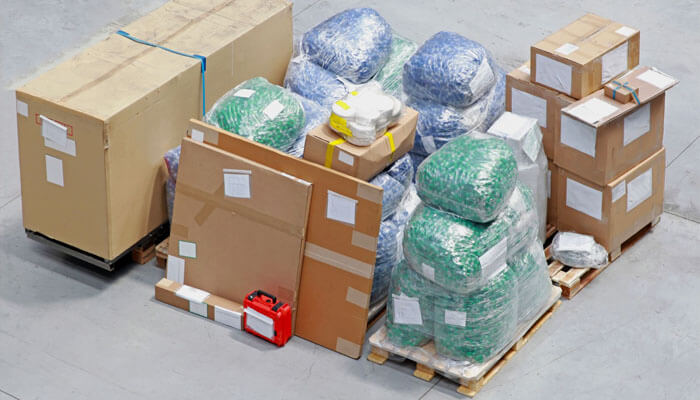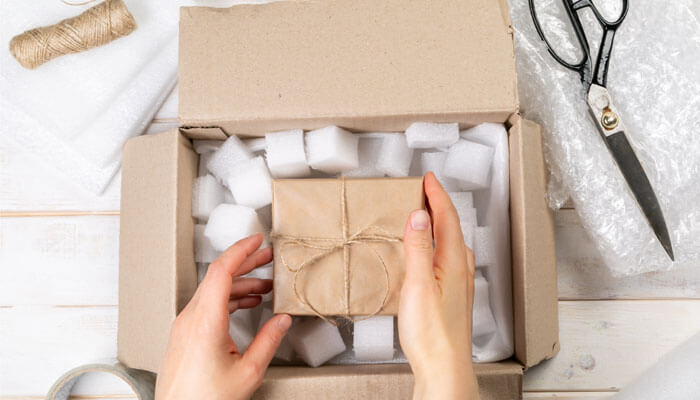Protective packaging is a critical component of the global supply chain, allowing anything from fresh fruits and vegetables to laptops and smartphones to be sent both globally and locally.
If you buy anything from a local store, online shop, or even at a farmer’s market, your newly purchased items were kept or carried in protective packaging materials at some point. That is how they get to their destination safely and intact.
However, different sectors require various forms of protective packaging. In addition, while cardboard boxes and plastic wrapping are appropriate for the food industry, they are not suitable for toxic materials.
This article will look at the critical industries that require protective packaging solutions and the types of protective packaging that are most commonly used in those industries in a safe and secure way.
Types of protective packaging materials in the food industry
1. Packaging film
Transparent packaging films are typically utilized for two reasons: protection and appeal. Food items, mainly raw food products, can be protected against contamination, discoloration, and oxidation, by using protective packaging made of translucent flexible film. Foodstuff may be kept fresher for longer and have a longer shelf life if protected from outside contamination.
Clear film packaging is often utilized to attract people to your product. Customers will be more inclined to purchase your goods if you show them what it looks like. Because many food items are rated based on their look,
2. Window packaging
Window packaging in food provides all of the benefits of film packaging, with the bonus of being used on foods such as chips, candies, yogurt, and other items that aren’t necessarily raw.
The goods can be placed in vacuum-sealed containers, which safeguard and extend the shelf life of processed foods. Window packaging provides the buyer with a brief peek at your goods, allowing them to decide whether or not to purchase them.
Types of protective packaging materials used in other industries
1. Bubble wrap
Bubble bags, also known as bubble wrap bags, are a type of packaging comprised of bubble wrap. While bubble wrap can take different forms, bubble bags are the most commonly used. These are bag-like formations constructed of continuous, little air-filled sacs that cushion items wrapped in them.
Bubble wraps, on the other hand, are one of the most well-known protective packaging materials and are famous for the therapeutic effects of bubble popping. It is still commonly used because it provides flexible cushioning with excellent shock absorption properties. Smaller 10mm bubble wraps are better for smaller product packaging, while bigger 20/25mm bubble wraps are better for more oversized items.
2. The loose-fill protective packaging supplies
Loose-fill product packaging is usually used to fill bigger voids in packages if the products are substantially smaller than the boxes. You can put multiple products together in one box.
While it has some protective features, it is not intended as a protective packaging product but still allows for some movement within the box. Therefore, it is not the best to use when packaging fragile products.
3. Protective Packing peanuts
Packaging peanuts are also known as foam peanuts, and although being made of foam, these Styrofoam® bits are in their category. Packing peanuts resemble the form of a peanut within its shell but are about the size of unshelled peanuts.
They are used to protect fragile items because they create a cushioning effect. Packing peanuts use space and closely surround the items they protect.
4. Packaging foam
Packaging foam is the largest protective packaging category. It encompasses a wide range of items that can be molded and cut into whatever shape is most suitable for a particular object. Packaging foam, as opposed to packing peanuts, is denser and bigger. Fragile items are better protected from damage when enveloped in packing foam.
Packaging foam doesn’t come in any set shape. Some popular types include sheets, foam rolls, sponge rolls, and egg crates. Packaging foam has a more varied composition. Therefore, there is rarely a single standard material.
It may be wrapped separately to match a specific object. It is the right protective packaging if you need it to be molded to offer protection for a specific item.
5. Packing paper
Packing paper is a type of paper that is used as a protective packing solution. It is significantly more dense and strong than regular writing paper and can take the shape of butcher paper, kraft paper, and other types. It is usually sold in a roll form.
Kraft and butcher paper are two types of packing paper. It was initially designed to store meat and fish. It is now utilized to protect a wide range of packaged goods.
To keep packing paper in place, supplement it with adhesive tape or glue. Silverware and china, in particular, should be wrapped extensively to avoid breakage.
6. Padded divider sets
Padded divider sets are compartmentalized boxes used to manage shipping contents. They have an all-over padded surface on their bodies and padded coverings for extra protection.
Packaging divider sets are best suited for holding smaller objects. When sending a collection of things, they can provide excellent protection. They are separated into three-dimensional compartments by little walls.
Padded divider sets allow transporting two incompatible items in the same package. Rather than purchasing two boxes, they let you combine the contrasting items into a single divider set.
7. Air pillows
Air pillows are often comprised of plastic pieces that have been inflated with air to form “pillows” that help protect fragile objects during transportation. These pillows are frequently packaged on a sheet with numerous separate parts to ensure that they remain adequately inflated during the flight.
Choosing the right protective packaging materials
Protective packing is critical for keeping things secure during delivery and ensuring that clients are happy when they get undamaged items. Being proactive with your packaging now may save you a lot of time, money, and heartache in the future due to damaged items! So, develop and test your protective packing intelligently to ensure a long-lasting and trustworthy packaging solution that delivers every time.



